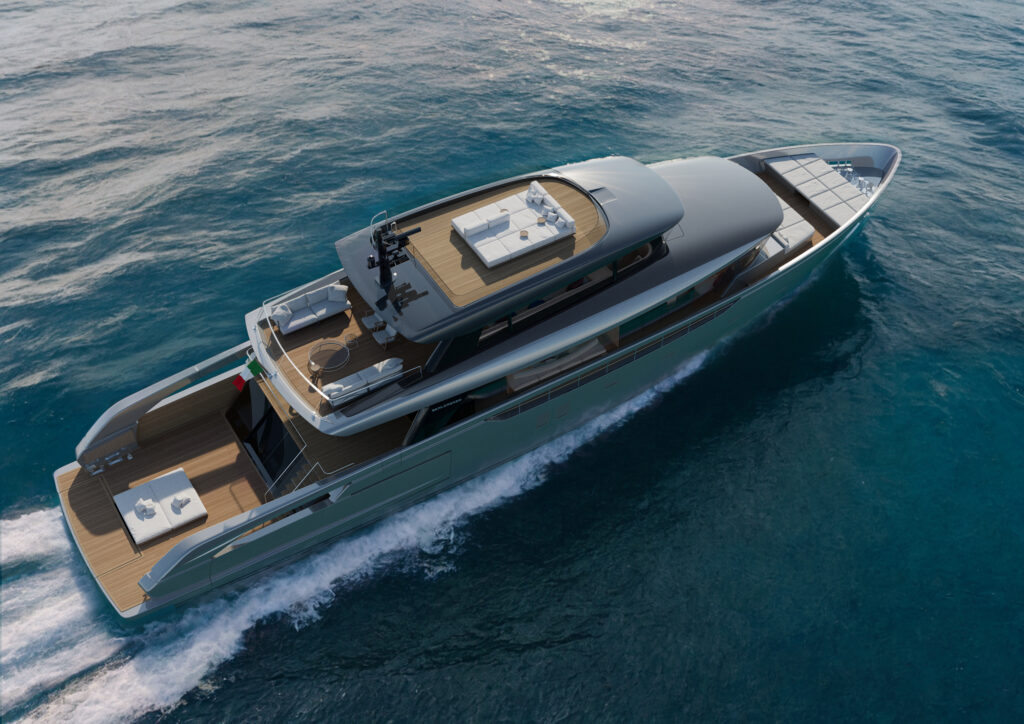The world’s leading trade fair for HVAC and water solutions, ISH, took place in Frankfurt am Main this year.
One highlight of the event was Hotspot Water, which featured Pop Up My Bathroom, a section dedicated to designers showcasing their latest innovative bathroom products as well as the top bathroom trends of the moment.
Pop Up My Bathroom provided a space for industry leaders and professionals to exchange ideas and share their designs for the bathrooms of the future. The focus themes this year centered on topics and current issues related to the environment, climate, urbanization and lifestyle.
In this article, we take a look at the top 5 bathroom trends featured at ISH 2023.

1. Sustainable Bathroom
Perhaps the most important trend at this year’s ISH trade fair for HVAC and water solutions is the Sustainable Bathroom.
Sustainability in the bathroom has become important to consumers who are conscious of their impact on the planet and the amount of energy they consume. For this reason, a big focus was on increasing sustainability initiatives and eco-friendly industrial production using renewable materials while simultaneously prioritizing functionality, enduring design, and longevity.
Many designers featured in the Pop Up My Bathroom section of ISH focused on the use of recycled and natural materials. Additionally, being mindful of water waste was a key concern for exhibitors and their product innovations. Consumer trends like zero waste play an integral role in the design process, as well as the desire to help Germany and the rest of Europe meet climate targets and reduce their ecological footprint.
But it’s not just about water. Heating is another factor which has a noticeable cost and environmental impact. Bathroom designers are continuing to expand the concept of sustainability with innovative solutions such as easy-to-clean products (such as rimless toilets), bathroom furnishings made from recycled and recyclable materials, and water-saving features (including contactless taps and dual flush).
One example of sustainability in the bathroom came from German company Kaldewei, which produces bathroom solutions made from fully-recyclable steel enamel, which contributes to zero waste. This year, they introduced the Oyo Duo bathtub, a freestanding tub made from 100% recyclable steel enamel.
The Sustainable Bathroom trend also focuses on using products that are durable and can last for years, emphasizing longevity and timeless design to promote the development of a circular economy.

2. Tiny Bathroom
The second major trend focused on at this year’s ISH event was compact bathrooms for urban homes. Many designers showcased solutions tailored to small spaces to emphasize minimalist living. Nowadays, there is a shift away from the traditional consumerist maxim “bigger, better, faster” due to its clear impact on the environment, society, and infrastructure. Homeowners are increasingly favoring spaces that are free of clutter for a more mindful and relaxed way of living.
This trend combines high-quality standards and comfort with modesty and functionality. For a large number of consumers who are already or considering sizing down in today’s economic climate, this scaled-down approach to bathrooms is characterized by simple aesthetics, smart solutions, modern convenience, and customisation.
The Tiny Bathroom trend may seem simplistic and minimal. but it requires meticulous attention to detail and precision, as well as digitized production of custom components for vanity units, bathroom furniture, and related products. Often, this is visualized in absent bathtubs that make space for level-access showers and plenty of built-in solutions and storage space. Consistent designs and quality materials also play an important role here, regarding furnishings, decor and lighting and other smart systems. It also favors a homogenous aesthetic with consistent color schemes and materials to create a sense of calm and spaciousness.

3. Bathroom for Well-being
Recently, there has been a significant shift in our focus on self-care. The desire to relax and rejuvenate to escape from everyday life is powerful, which is why the Bathroom for Wellbeing focuses on using the spaces in our home to create a sense of mental equilibrium and promote health and clarity through minimalism.
Using our bathroom spaces to create a sort of private spa was a major focus for designers this year, hoping to bring a touch of elegance and luxury to the home. The future concept of Bathroom for Well-being plays a role in the holistic concept of well-being, which involves other things like eating well, being active, taking care of our mental health, and keeping a clean and tidy home.
As humans, we spend a lot of our time in the bathroom, which is why this year saw product designs for simple and complex solutions that support a sense of contentment. These included bathtubs, programmable showers, smart products, therapeutic lighting and experience-enhancing multimedia features. In a well-being bathroom, a hotspot for self-care, all of the senses come alive and water is a key driver of this.

4. Emotional Bathroom
The bathroom has evolved from a functional space to a lifestyle space, with the adoption of sustainable products, aesthetic styles, smart technologies and more. The Emotional Bathroom trend showcased at Pop Up My Bathroom focused on how designers could bring emotion into holistic bathroom planning and the impact that colors, materials and shapes can have on how we feel and the senses they evoke.
Integrating emotion into the bathroom is linked to the well-being concept, as users seek feel-good experiences that nourish the soul throughout the home. However, this trend focuses on the use of aesthetics and the desire to hide functional elements and let the visual ones leave a lasting impression. This was expressed in many ways through innovative designs, reflecting the need for every material or shape to have a meaning and for high-tech solutions to achieve and express a goal.

5. Enduring Design Bathrooms
The final trend that was prominent at Pop Up My Bathroom at ISH 2023 was the desire for enduring bathroom designs.
The average lifespan of a bathroom is typically 15 to 20 years before plumbing has to be replaced and fixtures reinstalled. However, designers are increasingly focusing on the longevity of individual modules or entire bathroom installations to reduce the cost and stress for the user. Choosing bathroom designs and products that are durable and feature timeless designs is a key aspect of achieving sustainability in the home.
Additionally, the bathroom is a space that should be able to adapt to the users’ needs at different stages of their lives. Therefore, designers highlighted the importance of planning for safety handles and accessibility features while retaining a neutral aesthetic.
Check out all the recent design and architecture events from DDN here.















